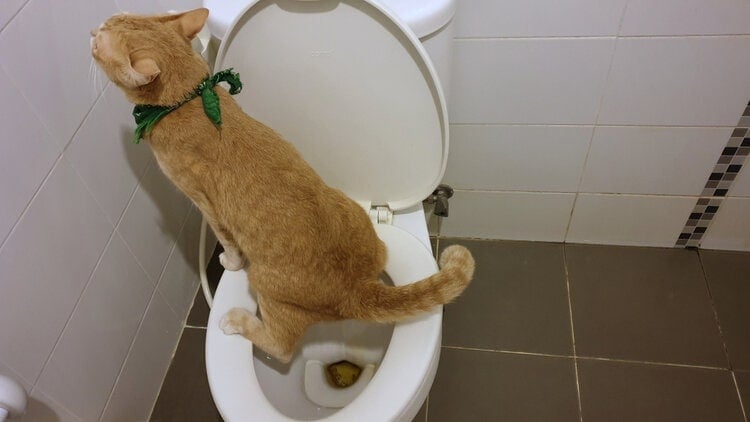On this page in the next paragraph yow will discover some incredibly good content pertaining to Can You Flush Cat Poo or Litter Down the Toilet?.

Introduction
As feline owners, it's important to bear in mind just how we deal with our feline pals' waste. While it might seem practical to flush pet cat poop down the commode, this practice can have detrimental effects for both the atmosphere and human health.
Alternatives to Flushing
The good news is, there are much safer and extra accountable means to get rid of pet cat poop. Think about the adhering to alternatives:
1. Scoop and Dispose in Trash
One of the most usual method of disposing of feline poop is to scoop it right into an eco-friendly bag and throw it in the trash. Make sure to make use of a committed litter scoop and get rid of the waste without delay.
2. Use Biodegradable Litter
Opt for biodegradable cat litter made from materials such as corn or wheat. These clutters are environmentally friendly and can be safely taken care of in the trash.
3. Bury in the Yard
If you have a backyard, think about hiding pet cat waste in an assigned area far from vegetable gardens and water sources. Make sure to dig deep sufficient to avoid contamination of groundwater.
4. Set Up a Pet Waste Disposal System
Purchase a family pet waste disposal system particularly developed for cat waste. These systems make use of enzymes to break down the waste, lowering smell and environmental influence.
Wellness Risks
In addition to environmental problems, flushing cat waste can additionally position health threats to humans. Pet cat feces might have Toxoplasma gondii, a bloodsucker that can create toxoplasmosis-- a possibly serious ailment, specifically for expectant females and individuals with damaged immune systems.
Ecological Impact
Purging cat poop introduces harmful microorganisms and bloodsuckers right into the supply of water, presenting a substantial risk to aquatic environments. These impurities can adversely influence aquatic life and compromise water high quality.
Final thought
Accountable family pet possession prolongs past supplying food and sanctuary-- it also entails appropriate waste administration. By avoiding flushing cat poop down the toilet and opting for alternative disposal approaches, we can decrease our ecological footprint and shield human wellness.
Why Can’t I Flush Cat Poop?
It Spreads a Parasite
Cats are frequently infected with a parasite called toxoplasma gondii. The parasite causes an infection called toxoplasmosis. It is usually harmless to cats. The parasite only uses cat poop as a host for its eggs. Otherwise, the cat’s immune system usually keeps the infection at low enough levels to maintain its own health. But it does not stop the develop of eggs. These eggs are tiny and surprisingly tough. They may survive for a year before they begin to grow. But that’s the problem.
Our wastewater system is not designed to deal with toxoplasmosis eggs. Instead, most eggs will flush from your toilet into sewers and wastewater management plants. After the sewage is treated for many other harmful things in it, it is typically released into local rivers, lakes, or oceans. Here, the toxoplasmosis eggs can find new hosts, including starfish, crabs, otters, and many other wildlife. For many, this is a significant risk to their health. Toxoplasmosis can also end up infecting water sources that are important for agriculture, which means our deer, pigs, and sheep can get infected too.
Is There Risk to Humans?
There can be a risk to human life from flushing cat poop down the toilet. If you do so, the parasites from your cat’s poop can end up in shellfish, game animals, or livestock. If this meat is then served raw or undercooked, the people who eat it can get sick.
In fact, according to the CDC, 40 million people in the United States are infected with toxoplasma gondii. They get it from exposure to infected seafood, or from some kind of cat poop contamination, like drinking from a stream that is contaminated or touching anything that has come into contact with cat poop. That includes just cleaning a cat litter box.
Most people who get infected with these parasites will not develop any symptoms. However, for pregnant women or for those with compromised immune systems, the parasite can cause severe health problems.
How to Handle Cat Poop
The best way to handle cat poop is actually to clean the box more often. The eggs that the parasite sheds will not become active until one to five days after the cat poops. That means that if you clean daily, you’re much less likely to come into direct contact with infectious eggs.
That said, always dispose of cat poop in the garbage and not down the toilet. Wash your hands before and after you clean the litter box, and bring the bag of poop right outside to your garbage bins.
https://trenchlesssolutionsusa.com/why-cant-i-flush-cat-poop/

Do you appreciate reading about How to Dispose of Cat Poop and Litter Without Plastic Bags? Create feedback further down. We will be pleased to know your opinion about this entry. We are looking forward that you come back again later on. Sharing is nice. You just don't know, you may be helping someone out. I am grateful for your time. Kindly come visit our website back soon.
Click Here